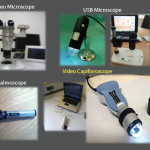A 32-year-old female comes in for an initial office visit. She has a referral from her primary care physician (PCP) for the complaint of pain, numbness, and color changes in fingers when she is exposed to cold. Her right distal index, right fourth, and left distal index fingers will turn white then blue when exposed to cold. In addition, the patient has pain and numbness in the digits.
These symptoms have been occurring for the past year, but have increased in frequency in the past two months. The patient reports that her fingers return to their normal color and the pain and numbness resolve after her hands warm. She has developed a sore on her left distal index finger. Her fingers sometimes feel stiff when she is exposed to the cold.
The patient denies any other musculoskeletal pain, stiffness, or joint swelling. She denies fatigue, weight loss, recurrent fevers, rashes, chest pain, dyspnea, cough, palpitations, hypertension, unusual bruising, menorrhagia, dysuria or frequency, abdominal pain, vomiting, diarrhea, constipation, dysphagia, hematochezia, headaches, memory difficulties, insomnia, depression, or weakness. She has no known allergies.
Past medical history: The patient has a history of type II diabetes mellitus. It is controlled with diet and oral hypoglycemic agents. She has no other comorbidities, and there were no surgeries or hospitalizations.
Family medical history: There is significant RA in the patient’s maternal grandmother and type II diabetes mellitus in her paternal grandfather and brother. She has no family history of Raynaud’s phenomenon, lupus, cancer, inflammatory bowel disease, psoriasis, renal disease, or blood disorders.
Social history: The patient is single and lives alone. She has a pet cat and works full-time as a marketing director. She denies smoking and drinks alcohol only on social occasions (2–3 times per year). She is sexually active with one male partner and uses oral contraceptives and condoms.
On examination: The patient is alert and oriented. Her vital signs are normal. The patient’s height is 5’7”; her weight is 140 pounds, and her body mass index is 21.9. Her HEENT exam is normal. There is no lymphadenopathy and her lungs are clear.
Her heart has regular rate and rhythm with no murmurs or friction rubs. The patient exhibits good peripheral pulses. Her abdomen is soft, non-tender, with no mass or hepatosplenomegaly. The patient has no costovertebral tenderness on percussion. Her skin has no rashes. She demonstrated mild cyanosis in the distal digits of right index, fourth, and left index fingers. There is also a shallow ulcer on the distal fingertip of her left index finger.
Musculoskeletal exam: The patient’s gait is normal. She exhibits good muscle strength in the upper and lower extremities, both proximally and distally. All joints are unremarkable with full range of motion and no evidence of synovitis.
Diagnoses:
- Raynaud’s phenomenon; and
- Rule out other autoimmune connective tissue disease.
Plan: The physician counsels the patient regarding the etiology, pathophysiology, symptoms, and prognosis for Raynaud’s phenomenon, reviews measures to minimize Raynaud’s phenomenon, and provides the patient with written information on the condition.
Laboratory studies are ordered to evaluate the patient for lupus or other autoimmune connective tissue diseases. The patient is started on extended-release nifedipine.
The physician reviews the actions and side effects of nifedipine with patient, documents his findings in a written report, and sends it over to the PCP.
How would you code this?


